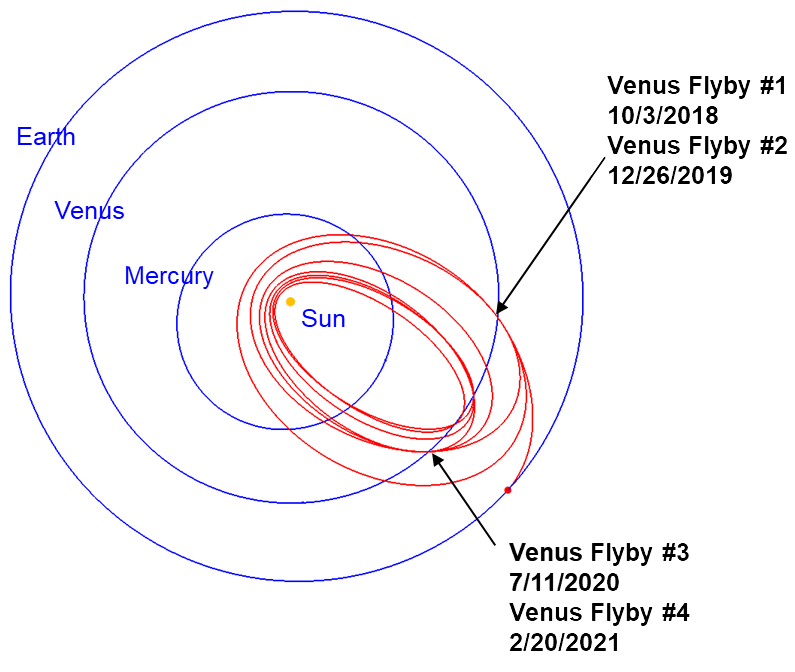Parker Solar Probe Heads Toward Second Venus Flyby
Posted on 2019-12-23 14:25:49After nearly 17 months in space culminating with the release of new science data, Parker Solar Probe is right on course for its second Venus gravity assist maneuver. This flyby will set the spacecraft up for its fourth perihelion of the Sun, during which it will set records for spacecraft speed and closest solar distance, while continuing to gather groundbreaking data from within the Sun's corona to help scientists make new discoveries.
On Dec. 26, at 1:14 p.m. EST, Parker Solar Probe will perform its second Venus flyby, during which the spacecraft will fly within 1,870 miles of Venus, using the planet to slow itself down and adjust its trajectory for an optimal path toward the Sun. This move allows Parker Solar Probe to precisely position itself for a fourth orbit around Earth's star-with its next close approach, or perihelion, on January 29, 2020-when it will break its own speed and distance records, flying within 11.6 million miles of the Sun's surface, 20 percent closer than its first three perihelia.
"These gravity assist maneuvers create the enormous orbit reduction required to get Parker Solar Probe close to the Sun," said Yanping Guo, mission and navigation design manager for Parker Solar Probe at the Johns Hopkins Applied Physics Lab (APL) in Laurel, Maryland. "The seven Venus flybys are connected in a unique sequence, and each of the flybys is chosen not only to make the necessary orbit reductions, but also to hit the subsequent flybys."
To prepare for this planetary maneuver, the Parker Solar Probe mission operations team at APL performed a small trajectory correction maneuver (TCM) on the spacecraft on Dec. 8. This TCM very accurately lined up the spacecraft for the rendezvous with Venus. After the flyby, the team will perform another TCM to fine-tune Parker Solar Probe's final approach for its fourth perihelion.
The spacecraft will complete five more of these critical Venus flybys in the coming years in order to gradually pull it closer to the Sun.

2019-12-23VenusFlyby2
High-Res Image